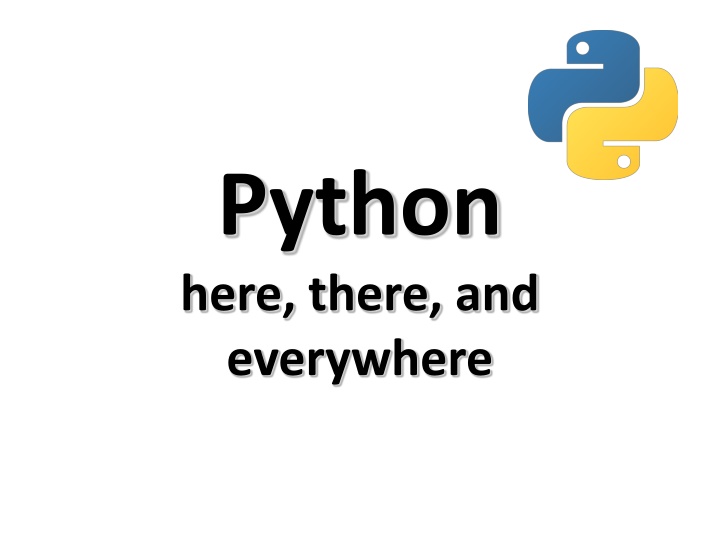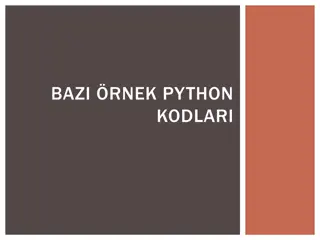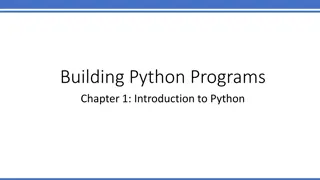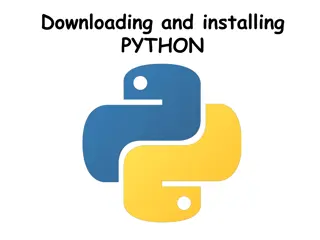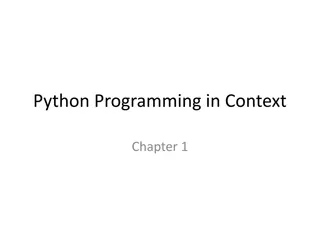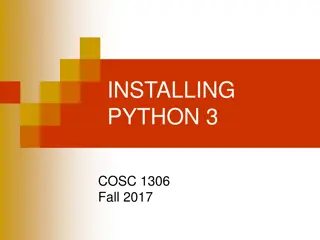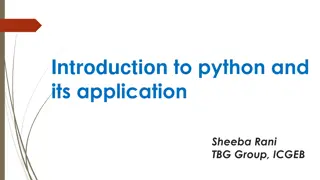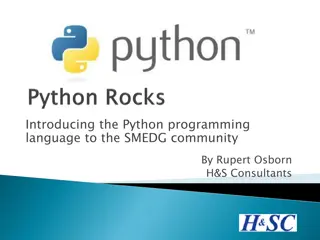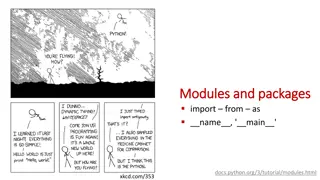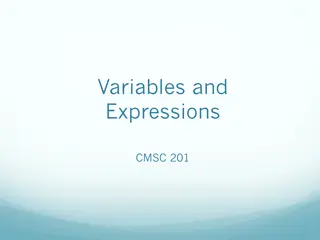Essential Python Tips and Tricks for Beginners
Dive into the world of Python with tips on where to run Python, how to install it on your computer, choosing IDEs, loading code, importing modules, and installing software packages. Discover the best practices to kickstart your Python journey.
Download Presentation

Please find below an Image/Link to download the presentation.
The content on the website is provided AS IS for your information and personal use only. It may not be sold, licensed, or shared on other websites without obtaining consent from the author.If you encounter any issues during the download, it is possible that the publisher has removed the file from their server.
You are allowed to download the files provided on this website for personal or commercial use, subject to the condition that they are used lawfully. All files are the property of their respective owners.
The content on the website is provided AS IS for your information and personal use only. It may not be sold, licensed, or shared on other websites without obtaining consent from the author.
E N D
Presentation Transcript
Python here, there, and everywhere
Where should you run Python It s best to install it on your own computer You ll have more control, can run Jupyter notebooks and learn more about it You can also run it on UMBC s gl unix system Installing new packages and modules as needed You can also use remote notebook servers At UMBC, Google Colab, Binder, And use other remote options Like Repl.it We ll give some details here
Installing Python 3 Assuming you have a computer running Unix, OS X, or Windows install the newest version of Python (e.g., 3.8) from python.org You can install it on iOS and Android, too Here s a tutorial if you need help Running it on your own computer makes it easier to install packages, IDEs, and use notebooks And will give you more experience
IDE or not? Python s an interpreted language so it comes with a read-eval-print-loop environment I ll admit to mostly using emacs to edit code in one window and the Python REPL in another Emacs comes with a python-mode that s invoked when you edit a file ending in .py But you may prefer a Python IDE Python comes with a simple one, IDLE PyCharm is very popular and good Here s a guide to Python editors and IDEs
Loading code into Python Load file foo.py from the current directory >>> import foo Each expression in the file is evaluated, but the value is not printed (i.e., it s a read-eval loop) Python will also search directories in the environment variable PYTHONPATH ~> echo $PYTHONPATH /afs/umbc.edu/users/f/i/finin/pub/ai/aima-python: /afs/umbc.edu/users/f/i/finin/pub/ai/: And load installed packages, which can be simple or complex with sub-packages >>> import tensorflow
File: example.py Import variations name = "Bob" def hello(): print("hello, I'm", name) def bye(): print("goodbye") How you import effects how you access its named functions and variables import example example.hello() import example as ex ex.hello() from example import hello hello() from foo import * hello() Python only imports a file once, subsequent imports do nothing
Installing software packages Python s got a huge user base and is the most popular language for AI today So there are many great SW packages to install Your Python probably came with pip, the standard python package install program Search for packages on pypi.org and install/update them with the pip command
Using pip For HW3 you ll need the python package python-constraint Install it on your own Linux or Mac system pip install python-constraint If your acct is not an admin: sudo pip install python-constraint Install without sudo privileges (e.g., on gl) pip install python-constraint --user
Type this to install Scroll down to see more info & documentation
Working on gl On gl, you tell Python to look in the directory we ve set up for AIMA python code Or set up your own directory (e.g., ~/mypy) in which you install new packages For either, you must first add appropriate directories to your PYTHONPATH environment variable Do this by modifying your shell initialization file (e.g., ~/.cshrc or ~/.bashrc)
Python and PYTHONPATH Python s import command looks for modules to load in a list of places sys.path is the list, with as the current directory >>> import sys >>> sys.path [ , '/usr/lib64/python26.zip', ] On Unix, when python starts, it prepends directories on your PYTHONPATH environment variable Add new directories for python to search by setting PYTHONPATH in the init file used by your shell The Unix command echo $SHELL shows what shell you are using
Using repl.it I m unfamiliar with this, but it looks interesting Web-based IDE startup for 60+ languages Including Python Free for public and limited use Good for trying new languages? Supports teams
